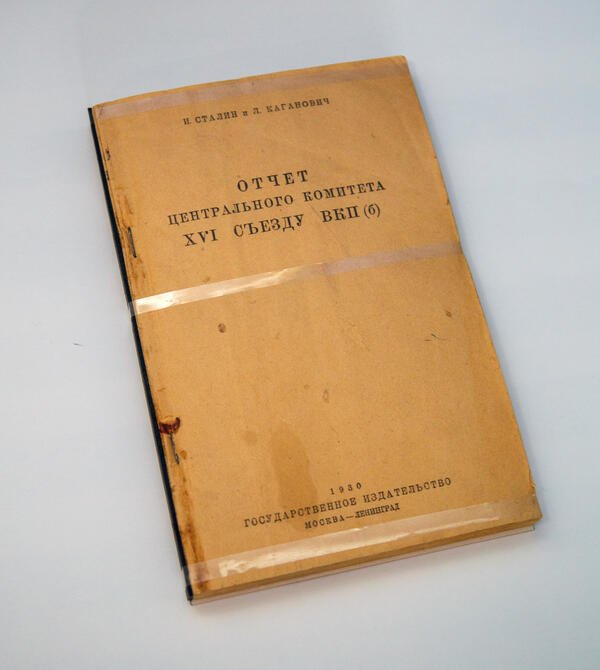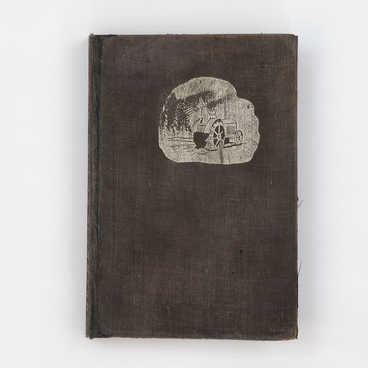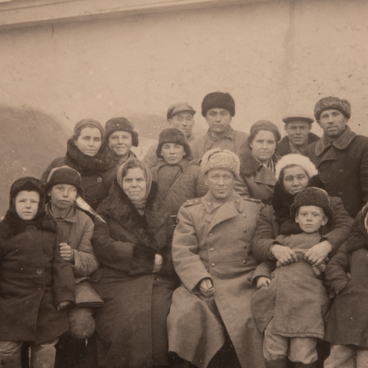Congresses of the Labor Party, from the illegal first one in Minsk to the last one in Moscow shortly before the dissolution of the Soviet Union, were organized for almost a hundred years. They were used to review the results, set new tasks, and identify the direction of development.
The Mikhail Sholokhov State Museum-Reserve houses the political report of the Central Committee which governed the country between the Congresses. During that period, it was led by Joseph Stalin.
At the 16th Congress organized in Moscow in the summer of 1930, Stalin delivered a report in which he advised to finish the five-year plan ahead of schedule, in four years. He also identified the country’s main objectives, which included establishing the second coal and metallurgical base in the East, creating large agricultural enterprises, cutting red tape, increasing labor productivity, creating reliable reserves, and improving the defensive capacities of the Soviet Union, along with other tasks.
The Congress became the platform for the reports of other party members of the Central Committee, including Lazar Kaganovich — People’s Commissar for Transport, Sergo Ordzhonikidze — a Georgian revolutionary and politician, Vyacheslav Molotov — the People’s Commissar for Foreign Affairs, Valerian Kuybyshev — General Secretary of the Communist Party of the Soviet Union, and others.
The Congress also discussed the collective farm movement. A decision was made to review the five-year plan of agricultural development, finish the socialist transformation of villages, and improve the economic status of collective farms. The Congress also delivered a verdict on the kulaks: as a result of collectivization, they “had to be liquidated as a class”.
Sholokhov was sensitive to the events happening in his country. He spent a lot of time visiting hamlets and stanitsas and saw with his own eyes the discrepancies, tension, and drama of the collective farm movement. He witnessed the absurdity, disarray, ignorance, and blindness of the overall management of these processes. Unable to remain silent, Sholokhov actively participated in providing help to the hungry residents of stanitsas, went to Moscow delivering requests and complaints, and sought assistance from the authorities.
The Mikhail Sholokhov State Museum-Reserve houses the political report of the Central Committee which governed the country between the Congresses. During that period, it was led by Joseph Stalin.
At the 16th Congress organized in Moscow in the summer of 1930, Stalin delivered a report in which he advised to finish the five-year plan ahead of schedule, in four years. He also identified the country’s main objectives, which included establishing the second coal and metallurgical base in the East, creating large agricultural enterprises, cutting red tape, increasing labor productivity, creating reliable reserves, and improving the defensive capacities of the Soviet Union, along with other tasks.
The Congress became the platform for the reports of other party members of the Central Committee, including Lazar Kaganovich — People’s Commissar for Transport, Sergo Ordzhonikidze — a Georgian revolutionary and politician, Vyacheslav Molotov — the People’s Commissar for Foreign Affairs, Valerian Kuybyshev — General Secretary of the Communist Party of the Soviet Union, and others.
The Congress also discussed the collective farm movement. A decision was made to review the five-year plan of agricultural development, finish the socialist transformation of villages, and improve the economic status of collective farms. The Congress also delivered a verdict on the kulaks: as a result of collectivization, they “had to be liquidated as a class”.
Sholokhov was sensitive to the events happening in his country. He spent a lot of time visiting hamlets and stanitsas and saw with his own eyes the discrepancies, tension, and drama of the collective farm movement. He witnessed the absurdity, disarray, ignorance, and blindness of the overall management of these processes. Unable to remain silent, Sholokhov actively participated in providing help to the hungry residents of stanitsas, went to Moscow delivering requests and complaints, and sought assistance from the authorities.
In 1933, Mikhail Sholokhov addressed Stalin twice, asking for a food loan in the amount of almost two million kilograms of grain. In the response telegram, Stalin confirmed that the necessary assistance had been provided.



